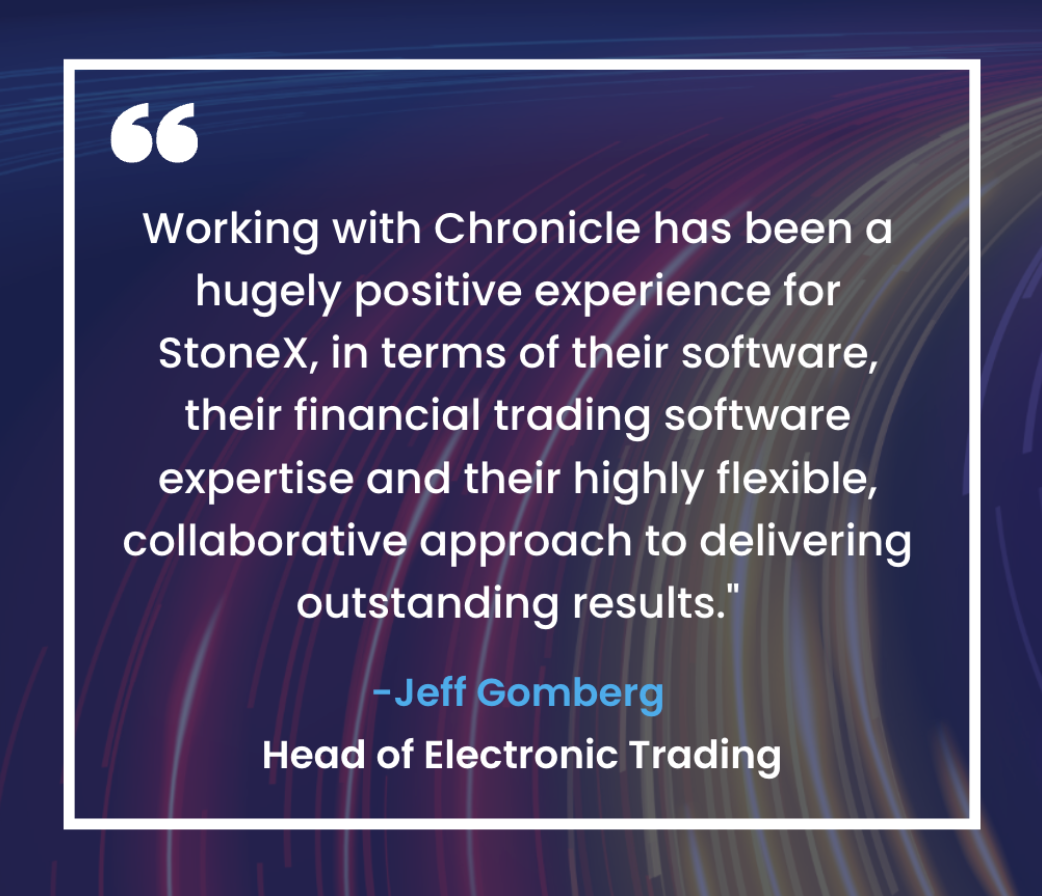"Chronicle Services laid a great foundation down for us to build our trading algorithms on top of"
- Jeff Gomberg, Head of Electronic Trading at StoneX Markets LLC
Trusted. Tested. Transformative
At Chronicle we pride ourselves on the stability and knowledge of our development and support team. With decades of experience from the financial industry, you can trust us with your toughest challenges.
For example, we recently helped StoneX enhance their futures trading performance, with Chronicle Services and Chronicle FIX.
See below for the full case study:

Why Chronicle Services?
Traditionally, low-latency trading systems are developed as monolithic applications, which typically have high development efforts, and can make adapting existing applications to changing market demands difficult.
A solution is to use Chronicle Services, an event-driven microservices framework that provides simple, maintainable, testable code and market-leading performance.
Chronicle Services is the perfect starting point to develop tailored solutions. A combination of externalised configuration, powerful APIs combined with a novel approach to testing based on BDD techniques, allows developers to focus on implementing business logic. Development timelines are shortened without sacrificing quality and ROI is apparent much more quickly.
The Chronicle team has helped develop custom microservices for individual firms, such as solutions for pricing, auto hedging, order management, or market connectivity.
There are also ready-made microservices, for example Book Builder and Market Gatekeeper, that can be deployed in conjunction with Chronicle's performance optimised FIX-engine. See Chronicle EFX
Articles about Chronicle Services
Last month, I wrote an article on Open source Chronicle Wire, that discusses how we could serialise an application’s state into different message formats. Now in this article, I’m going to look at how we can use Open source Chronicle Queue and Chronicle Wire to structure applications to use Event-Driven Architecture (EDA). EDA is a…
Introduction to Chronicle Services Traditionally, low latency trading systems were developed as monolithic applications in low level languages such as C++. While these systems delivered the required performance, the development effort was extremely time consuming, and the complexity of the software made it difficult to adapt existing applications to changing market demands. A solution to…
Peter Lawrey explores how Chronicle Software can help you develop a Low Latency Microservices architecture